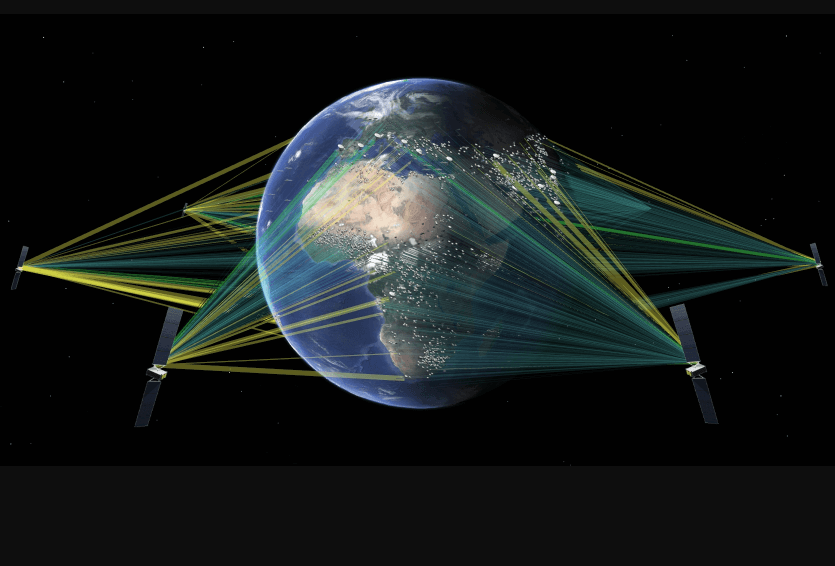SES demonstrated its current generation O3b Medium Earth Orbit (MEO) satellites for 5G backhaul .
The proof-of-concept, which was held with du from Emirates Integrated Telecommunications Company (EITC), saw numerous tests conducted over an SES’s O3b satellite, including voice and data scenarios to measure quality of service performance and stress test load capacity. The low latency and high throughput 5G backhaul link showed O3b is an ideal solution for 5G satellite-enabled networks with Quality of Experience (QoE) at par with terrestrial backhauling technologies.
“du has vast experience using satellites for its own cellular backhaul, as well as for delivering satellite-enabled data communications services to our enterprise customers, but we need much better throughputs and low-latency performance to support our enterprise, cloud, and data growth applications. O3b mPOWER promises to provide the dedicated multi-gigabit per connection scale with cloud-optimised and low-latency performance to provide the required Quality of Experience (QoE) with the flexibility of satellite,” said Saleem AlBlooshi, Chief Technology Officer, du.
John-Paul Hemingway, Chief Strategy & Product Officer of SES, said, “We appreciate the opportunity to collaborate with du on this demonstration of high-performance MEO services and how we can jointly deploy the Middle East’s first satellite-enabled 5G backhaul network. du can leverage more guaranteed-SLA bandwidth, with greater flexibility, via O3b mPOWER to rapidly generate new revenue streams by expanding high-quality 4G/5G to remote areas and by cost effectively connecting its enterprise customers.”
SES opens new era with O3b mPOWER MEO constellation
SES heralded the first launch for O3b mPOWER, its second-generation medium earth orbit (MEO) constellation poised to enable tens of thousands of multi-gigabit class spotbeams across the planet.
SpaceX succesfully orbited the first two satellites, which a software-defined capability to deliver more than 5,000 steerable beams that can be repositioned based on real-time data from SES customers’ terminals. The satellites were launched aboard a Falcon 9 rocket from Space Launch Complex 40 (SLC-40) at Cape Canaveral Space Force Station in Florida.
The satellites are based on Boeing’s 702 platform use Spectrolab’s custom-designed solar arrays built to withstand harsh MEO radiation.
SES contracted with Boeing to deliver 11 O3b mPOWER satellites to SES, Boeing continues production, integration and testing of the remaining nine spacecraft. The O3b mPOWER satellites are also flexible in their launch configuration, with the ability to launch two or three satellites at a time.
SES said its new MEO satellites will be able to deliver roundtrip latency of less than 150 milliseconds. The company is also partnering with Microsoft to bring one-hop connectivity from the satellites into Microsoft Azure data centers. The terabit-scale capacity of the new O3b mPOWER constellation, the automated and software-defined steerable beams of the satellites, upgraded customer terminals and telco/cloud partnerships are expected many new use cases and deployment sites.
“Much more than just another launch, today marks the next milestone of our MEO journey. Since starting this journey, we have gone on to positively impact millions around the world. Today, with our second-generation O3b mPOWER, we are bringing game-changing technology that delivers a unique combination of multiple gigabits per second of throughput at any location, guaranteed reliability and service flexibility that is a first in the industry,” said Steve Collar, CEO of SES. “Whether we are enabling governments to carry out critical missions securely, cruise operators to provide high-speed broadband access to passengers at all times, or mobile network operators to deploy 4G/5G networks in underconnected areas or restore communications networks in down time, O3b mPOWER is the satellite system of choice for applications where performance matters most.”











